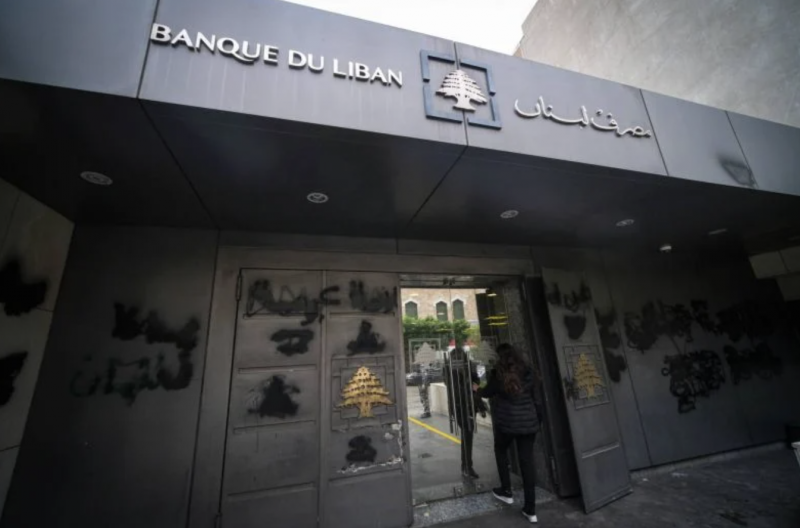
Entrance to Banque du Liban (BDL) in Beirut. (Credit: João Sousa/L'Orient-Le Jour)
This move represents another stride by BDL toward harmonizing exchange rates on the Lebanese market throughout the four-year crisis.
With the adjustment, the Sayrafa rate aligns, at least temporarily, with the parallel market’s fluctuating rate, which has been hovering between LL89,000 and LL90,000 to the dollar for several months.
In a concise press release, BDL omitted the term Sayrafa, opting for the generic term "platform," signaling the definitive end of the Sayrafa experiment. Its successor — a new foreign exchange platform developed by BDL in collaboration with the American company Bloomberg —, initially slated for 2023, is now postponed till 2024.
Beyond the pro-forma announcement, this new development suggests significant changes. L’Orient-Le Jour provides an overview.
Civil servants and bills
Civil servants receiving salaries in the local currency are directly impacted by these changes.
For several months, they had the choice to withdraw their salaries in dollars at a more favorable rate than the parallel market, resulting in a modest capital gain of approximately LL4,000 for each dollar purchased at the rate of LL85,500 instead of the new LL89,500 rate.
With the BDL exchange rate now aligned with that of the parallel market, civil servants no longer have the option, unless there is an increase in the lira value on the black market.
This change also impacts the payment of specific bills, particularly cell phone bills (Alfa and Touch) and public electricity (Électricité du Liban), which are still calculated and denominated in dollars based on the BDL rate, rather than the now-defunct Sayrafa rate.
Notably, Électricité du Liban (EDL) bills will no longer include the previous 20 percent increase calculated at the Sayrafa rate, as the BDL rate becomes the sole reference.
While the public supplier is currently catching up on issuing and collecting bills, the elimination of the 20 percent increase will take effect for bills from May onwards, as EDL is currently issuing April invoices.
For banks, the recent rate adjustment has not led to any modifications, either to Circular 151, which permits depositors to reclaim a portion of their funds illegally blocked in banks at the official rate of LL15,000 to the dollar (representing a haircut of over 83 percent), or to the methodology used in calculating the banks’ balance sheets.
For any changes in this regard, BDL Governor would need to issue a circular. The fate of Circular 151, set to expire at the end of the year, remains uncertain.
This article was originally published by L'Orient-Le Jour.